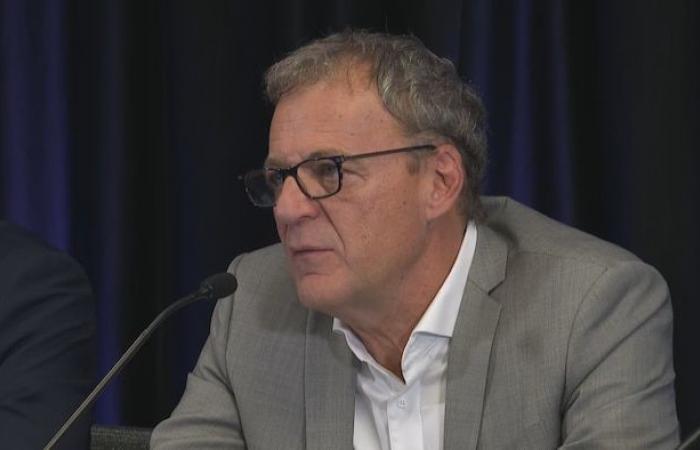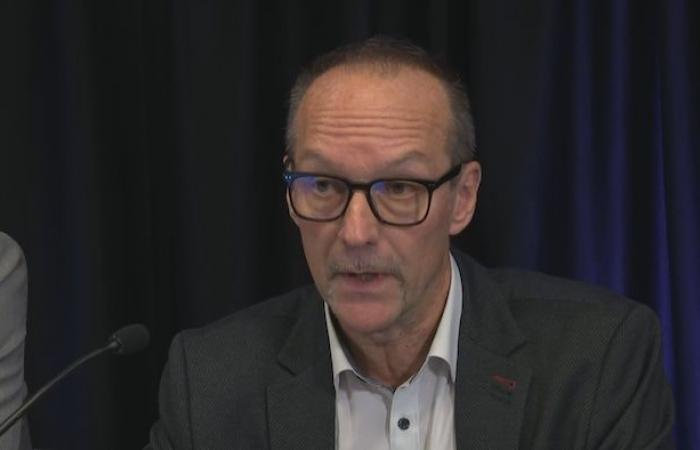Despite the service disruptions expected over the coming months and a higher implementation cost, the president and CEO of CDPQ Infra, which is leading the deployment of the Réseau express métropolitain (REM) in Greater Montreal, believes that the project shows satisfactory progress.
At a press conference on Thursday to take stock of the delivery of the northern (Deux-Montagnes) and western (Anse-à-l’Orme) antennas of REMnow scheduled for fall 2025, he argued that CDPQ Infra always had a realistic plan, which makes no compromise on safety, which makes it possible to offer a service as quickly as possible to all users of the REM
.
Open in full screen mode
The President and CEO of CDPQ Infra, Jean-Marc Arbaud, provided an update on the progress of the REM work.
Photo : -
The new delays are mainly explained by the migration of a temporary control center located in Saint-Eustache to that of the South Shore, so that the REM ait one brain
.
We are finalizing the installation of systems, including one called the backbone, a fiber optic network that allows communication from the South Shore control center with the entire system and subsystems to the track and with the trains
explained the vice-president of the project REMJulien Hurel.
Mr. Hurel indicated that 1,200 hours of work would be necessary to validate the main branch which brings us from the South Shore to Deux-Montagnes
hence the series of planned service interruptions.
On va s’organiser
Open in full screen mode
Denis Andlauer, vice-president operations of CDPQ Infra
Photo : -
What mitigation and support measures are planned for users of the REM? The vice-president of operations CDPQ Infra, Denis Andlauer, explained that a shuttle service every 10 minutes will be offered. This is more than enough to replace the REM
he assured.
Mr. Andlauer promised that everything would be coordinated with transport companies.
We will organize ourselves with our transport partners [notamment la STM et l’ARTM] to have a suitable succession plan capable of meeting demand. We have enough time to do it.
Users of the REM will they receive a discount or other compensation? Mr. Andlauer referred this last question to the Regional Metropolitan Transport Authority (ARTM), with whom, he said, CDPQ Infra is under constant discussion.
$392 million more expensive
The extension of work and the finalization of operations in the Mont-Royal tunnel, where the installation of operating systems is 85% complete to date, led to an increase in the net cost of the project of $392 million, indicated Jean-Marc Arbaud.
From a total estimate of $7.9 billion when last updated in September 2023, the net cost of REM therefore rose to 8.34 billion dollars.
Mr. Arbaud maintains, however, that at $125 million per kilometer, the cost of REM stay much lower than the others [projets similaires]
. If you look at comparable projects in North America over the last 10 or 15 years, it’s a remarkable achievement
he insisted.
CDPQ Infra will bear this new cost increase, and its share will now be almost $5 billion. The contributions from the Quebec government, the federal government and Hydro-Québec will remain unchanged, explained Mr. Arbaud.







